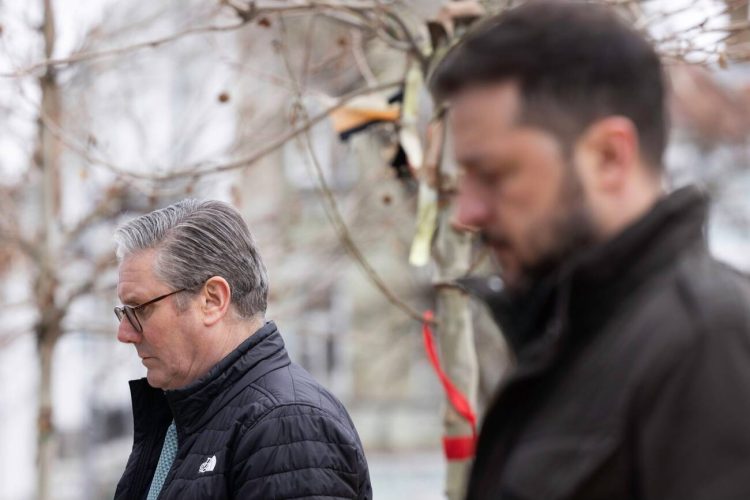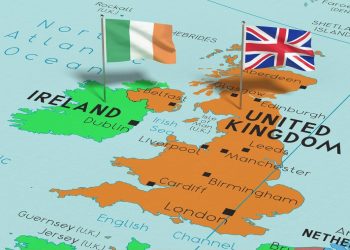The UK military deployment to Ukraine has redirected debate concerning the security of Europe and the fragile nature of peace between Moscow and Kyiv. After a symbolic meeting in Alaska between Donald Trump and Vladimir Putin, Britain sent a clear signal about its intentions. It announced that fighter jets and warships would be ready to deploy to Ukraine if a ceasefire were to take place. The action is representative of the UK’s intention to be at the forefront of European defence, even if fighting has stopped. It transcends symbolic gestures, in defiance of deterrence, escalation, and the construction of a NATO-like system for Ukraine, short of full membership on legal terms. Yet the move raises a crucial question: is this reassurance for Kyiv, or provocation for Moscow?
Symbolism of readiness after Alaska talks
British action followed the Trump–Putin Alaska summit meeting at the top level, a summit which came with expectations and suspicions. London sought to demonstrate that it would uphold Western commitments. The government aimed to make clear that these commitments would not be reduced even if Kyiv and Moscow agreed to a ceasefire. The British government placed warships and planes on standby to demonstrate its commitment to defending Ukraine’s sovereignty. Placing troops on standby was London’s way of showing Moscow it would not see any peace as a timeout to come back stronger. In reality, it was a warning to Moscow that aggression would be met with immediate global countermeasures. That balance remains a manifestation of the twin rationale behind the UK’s military action in Ukraine.
Britain and France: The Franco-British ideal of an international “reassurance force”
Another dimension is the Franco-British idea of an international “reassurance force.” The two governments were at the Alaska summit debating how to stabilise Ukraine when combat ebbed. This offer envisioned deploying ground troops for rebuilding, air power to dominate the skies, and naval protection to secure access to the Black Sea. Such coordination fell within a greater European appreciation that it would be unwise to leave Ukraine exposed following a ceasefire. In advancing the notion of a collective force, London and Paris were establishing international responsibility so that Ukraine’s survival would not rest with any single ally. Here, the deployment of UK troops to Ukraine is not an independent move in itself, but rather part of a comprehensive Western policy aimed at achieving long-term stability.
Media narratives: UK military deployment to Ukraine as assurance or provocation?
Media reporting has reflected the duplicitous nature of this policy. On one level, the UK statement was framed as a guarantee of safety for Ukraine. It promised that Western allies would not leave Kyiv once the guns fell silent. But other people asserted that foreign aircraft and vessels under a ceasefire would be less comforting and more threatening. For the Russians, the gesture can be seen as NATO gaining the upper hand through the back door. The key question is whether the UK military deployment to Ukraine increases peace by deterring aggression, or threatens peace by pre-warning military encirclement. The double meaning of this sort makes the choice contentious in Britain and beyond.
NATO without membership: What UK military deployment to Ukraine means for European security
The most significant implication of Britain’s choice is that it opens the door for NATO-style defence of Ukraine without membership in the organisation. Ukrainian membership in NATO has been discussed for years as a potential cause of war escalation. By establishing a multinational force that closely mimics some of NATO’s activities—such as joint planning, collective defence, and rapid deployment—the UK has effectively offered Kyiv membership in practice, according to confident analysts. Ukraine does not have the Article 5 protection of the North Atlantic Treaty Organisation (NATO). Still, it does have something similar, with Western soldiers on its ground ready to repel aggression. This is why UK military deployment to Ukraine is a game-changer, as it blurs the distinction between membership in a military alliance and external security guarantees.
Strategic benefits of the deployment
The initiators of the plan are convinced that the benefits of the proposal surpass the demerits. A British and allied constant or semi-constant presence would allow Ukraine to restore its devastated infrastructure under more secure conditions. It may also prevent Russia from using a ceasefire to regroup or experiment with new attacks. Apart from Ukraine itself, the deployment reinforces Britain’s role as a leading European military power, a position it has sought to reassert since Brexit. The symbolic impact of RAF flights over Ukraine or Royal Navy ships patrolling adjacent waters far surpasses deterrence—it shows to the world’s audience that the UK remains at the heart of security action. Proponents view Britain’s military intervention in Ukraine as an opportunity to showcase the country’s commitment. They believe it shows commitment to protecting an exposed ally.
Risks of escalation and Russian responses
Risks, however, remain high. Moscow has been posturing for some time now against the encroachment of foreign forces into Ukraine, labelling such moves as unacceptably risky red lines. The Kremlin may see the presence of Western planes and warships during a ceasefire as a direct challenge. It could respond with various measures. Russia may increase the intensity of its own exercises along borders, start cyberattacks, or increase hybrid warfare measures. In such situations, the deterrent leadership might instigate the very war it is trying to deter—that paradox—provocation or deterrence is at the centre of all UK discussions on sending troops to Ukraine. Western strategists recognise that credibility hinges on demonstrating genuine commitment. At the same time, they want to avoid moving too far up the path of escalation.
British domestic politics and public opinion
In Britain, the suggestion has been the subject of media and parliamentary debate. Its advocates argue that Britain has both strategic and moral reasons to help defend Ukraine. They also emphasise that national security is closely linked to European security. Opponents raise concerns about the cost, overstretch, and potential entanglement in a protracted war with Russia. However, it does not want British troops and aircrew to enter a raging war zone. Policymakers must grapple with this conflict. They must make the case for why UK military intervention in Ukraine is necessary not just to Kyiv’s survival but also to Britain’s long-term security.
The diplomatic high wire
Diplomacy will be the key that sets this plan in motion or explodes in their faces. Britain will need to act in close coordination with its allies to make deployments multilateral, rather than unilateral. French, German, or even non-European allied involvement would exclude the spectre of an Anglo-Russian one-sided standoff. Being open with Kyiv will be just as important, so that Ukrainian authorities view the deployment as aid rather than meddling. Moscow communications, though restricted, will also be significant. Conveying defensive intent and not offensive ambition can reduce the threat. The challenge is Herculean: to ensure UK military deployment to Ukraine becomes a bridge to stability, rather than an accelerator for more conflict.
UK military deployment to Ukraine: Reassurance or escalation?
The idea of UK military deployment to Ukraine encapsulates the fragility of the post-ceasefire environment. On the one hand, it gives Ukraine a promise of security and stability. It also guarantees that peace will not serve as a prelude to future aggression. On another level, it risks being interpreted as provocative, stoking Russian grievances against Western expansion. The memory highlights Britain’s earlier enthusiasm to shape European security and its close partnership with France. It also shows Britain’s willingness to act even outside NATO’s formal framework. Whether it becomes a pillar of lasting peace or a source of new instability depends on the application of careful diplomacy. Success also requires prudent implementation and continuous adjustment. The future of Ukraine may hang in the balance on whether the deployment is remembered as reassurance or provocation.





























